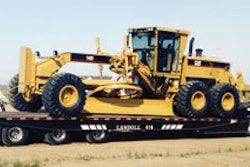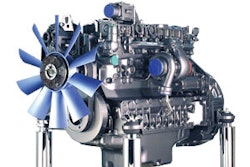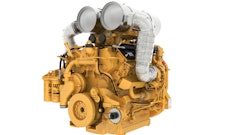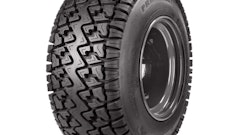Truck owners are faced with many issues concerning their vehicles’ electrical systems, including advanced electronic devices that demand more power for longer periods of time. Knowing more about commercial batteries and their technologies can prevent excessive downtime, maintenance costs and headaches due to performance issues.
There are four main types of commercial truck battery technologies available: traditional flat plate (flooded), gel cell, flat plate absorbent glass mat (AGM), and spiral-wound AGM technology.
The chemical reaction in traditional flat plate (flooded or lead-acid) batteries is produced from suspended lead plates hung from tabs, reacting with free-flowing electrolyte. As the most common product on the market, flooded batteries offer more size and design options than other technologies and are readily available at most outlets. For those with very basic power needs, a low-cost flooded battery might be the answer.
Lead-acid batteries do have some disadvantages. Metals are added to the lead in flooded batteries to maintain flat plate integrity. The introduction of these metals can cause an increased rate of corrosion, which can shorten battery life. Most flooded batteries also require maintenance, meaning water must be added on a scheduled/regular basis.
Much like flooded battery designs, the gel cell design incorporates lead plates reacting with the electrolyte. However, gel cell batteries introduce silica to the electrolyte, which helps immobilize the acid. The gelled acid is less likely to spill, resulting in lower maintenance costs over time compared to traditional flooded batteries.
However, gel cell batteries typically require purchasing a specific charger, adding to the higher average battery cost. They are also susceptible to overcharging, so the recharging process needs to be precisely controlled with lower voltages and slower recharge rates. In addition, due to the alloyed lead and silica in the gel, gel cells can have lower power output (CCA) than more advanced technologies, presenting power issues to trucks with high-demand diesel engines.
Flat-plate absorbent glass mat (AGM) technology can further address various battery issues, including shortened shelf life, spillage, gassing and failure due to vibration and heat. This technology places an absorbent glass mat between the lead plates, essentially immobilizing the acid (holding the electrolyte in place).
Although more expensive, the physical bond between the separator, fibers, lead plates and containers make these batteries virtually maintenance-free, spill-proof and more vibration resistant compared to traditional batteries. A major disadvantage of flat plate AGM technology batteries is their limited size and availability.
Like flat plate AGM, spiral wound AGM technology (OPTIMA SPIRALCELL Technology) constrains all of the acid in an absorbent glass mat. The mat is spiral-wound with lead grids and placed in one of six cylinders within the battery to create the lead acid reaction. Each cylinder is compressed and locked tightly in place, creating a durable, vibration-resistant battery able to withstand rough-terrain applications. The reaction, housed in a completely sealed case, also means no acid spills or damage to a truck’s electrical components. In addition, the batteries utilize a purer lead than traditional batteries (99.9%), resulting in a lower rate of corrosion.
There are two key advantages to using spiral wound AGM technology under heavy electrical loads. One is a higher starting voltage, which provides stronger cranking power than traditional batteries. This is important in cold weather and with diesel engines. The other is the deep-cycle capability the battery provides. For example, the Optima YellowTop dual-purpose starting and deep-cycle battery can be discharged to a low voltage and charged back up to maximum voltage.
Commercial trucks and equipment are being exposed to much more demanding conditions. Off-highway trucks face increased vibration and constant use, often running up to 23 hours a day. Greater loads are also being placed under the hood, including electronic engines, ABS and air conditioning, as well as emerging steering- and braking-by-wire technologies. All of this can strain a truck’s battery, leading to premature battery failure and increasingly lowered performance. Investing in appropriate battery technology can help pay for itself in the form of increased battery longevity, reduced downtime and improved vehicle performance.
Information provided by OPTIMA Batteries’ Commercial Trucking segment.



















